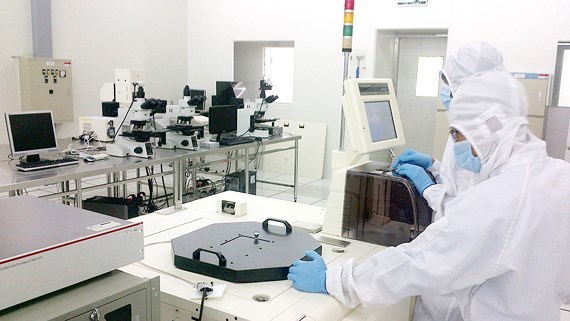Vietnam is among the top chemical fertilizer users in the world with 7.7 million tons a year sold every year. This has resulted in a high rate of degraded soil, according to the Forest Protection Department.

This situation also exists in many other countries. Foreign investors are spending big money every year to research and develop preparations to upgrade soil quality. Vietnamese enterprises are also making similar preparations to use on Vietnamese soil.
However, the products now available in Vietnam are mostly biological or chemical products which make the soil more moist and stimulate plants to develop.
But these preparations have weak points, including the limited time of use, just several months, since they contain live microorganisms such as photosynthetic bacteria, lactic bacteria and yeast.
This means that when the products reach farmers, they only have a very short time to use them as the quality of products is unstable.
|
Iimported products are very expensive and unaffordable for the majority of Vietnamese farmers, around VND600,000 per liter. And they are unsuited to Vietnamese ecological conditions. |
Meanwhile, imported products are very expensive and unaffordable for the majority of Vietnamese farmers, around VND600,000 per liter. And they are unsuited to Vietnamese ecological conditions.
Many products can work well in other countries, but are ineffective on Vietnam’s land because exotic microorganisms have to compete with IM, and the effects are weakened.
That was why Minh and her co-workers developed biological preparations using Arbuscular Mycorrhizae (AM) and Rhizobium.
AM is known for its ability to promote root growth and nutrient absorption, and to improve soil structure through the creation of organic matter and colloids.
According to Minh, although AM and Rhizobium are common in Vietnam soil, it was still necessary to take many steps to obtain the genera and species that fit the purposes of use.
Minh and her co-workers had to perform many steps, from sampling, isolating and reading gene codes to identifying species, and then experimenting on plant and animal tissues. This process was repeated for years before they could reach a conclusion.
Finally, the team of researchers invested in biological preparations with AM. Initial tests showed 100 percent success in vegetation recovering, even if the soil was depleted in nutrients, acidified or devastated after natural disasters.
RELATED NEWS
Vietnam makes biotechnology progress
Biologist warning on building paper mill
Chi Nam
 Using indigenous microorganisms (IM) as input materials, Nguyen Thi Minh from the Vietnam Academy of Agriculture has created biological products to improve soil which have lower cost and equal effectiveness compared with imports.
Using indigenous microorganisms (IM) as input materials, Nguyen Thi Minh from the Vietnam Academy of Agriculture has created biological products to improve soil which have lower cost and equal effectiveness compared with imports.